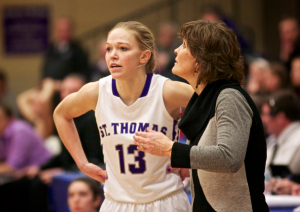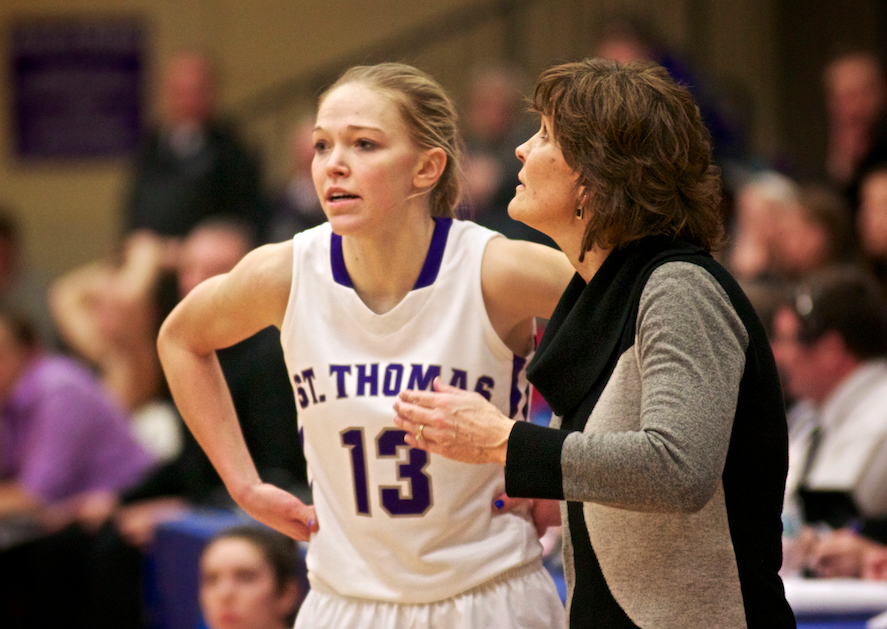According to a Tucker Center study at the University of Minnesota, 40 percent of athletes in the United States are female, but only 4 percent of media coverage goes toward women’s sports.
St. Thomas women’s soccer forward Taylor Sabrowski grew up playing sports and said she noticed the differences between men’s and women’s athletics.
“I do feel that my brother had a better experience with sports growing up than I did, just based on the more opportunities he had,” Sabrowski said.
Both women’s and men’s athletics deal with issues regarding recruiting, business, promotions and more. Athletic Director Steve Fritz said while differences exist in the overall perception of women’s sports in comparison to men’s sports, things have improved over the years.

“I think there’s more of a difference in the Division-I and Division-II levels than there is here,” Fritz said. “You look at the programs that we have here now, and I don’t find so many stereotypes. The challenges we face on the men’s side are very similar to the ones we face on the women’s side.”
Even though women may not have the pervasive media coverage yet, women’s sports are continuing to gain popularity, and Sabrowksi said the rise in the amount of female athletes is noticeable.
“I think there is a growing appreciation for athletics in general,” Sabrowksi said. “At first, I think women’s sports were seen as a joke, and the girls were ‘trying to do what boys do.’ Now, people appreciate the talents that athletes have whether they are male or female.”
Women’s basketball coach Ruth Sinn also said she has noticed a change in female athletics.
“The thing about it is the game has evolved,” Sinn said. “I think the interest level and the excitement level certainly have taken a positive step.”
As for why female sports only attract 4 percent of media coverage, Fritz said that is just business.
“Really it comes down to who they can get sponsors for, and I just have to believe selling Duke basketball for men is a lot easier to sell than Duke basketball for women,” Fritz said. “Who knows why, but the women have made their mark now.”
Sinn said that although there are still noticeable differences, she is very happy with how far female athletics have come.
“It’s so exciting that the female athletes are getting the same opportunity that their male counterparts are now,” Sinn said. “Hopefully we can continue to use that as a platform and lots of young girls are going to get these opportunities.”
Sabrowski agreed and said she believes the key to continuing growth is in America’s youth.
“I think women’s sports should keep encouraging younger girls to play. The more popular it gets, the more people will pay attention,” Sabrowski said. “We are definitely on our way to having a better appreciation of women’s sports, which is awesome.”
Andrew Frentz can be reached at fren2218@stthomas.edu.



